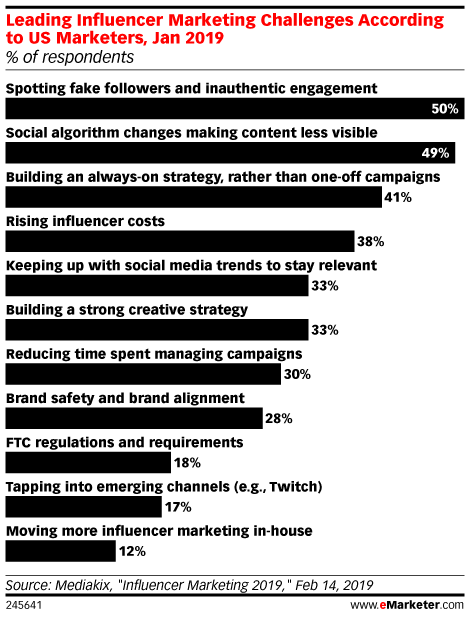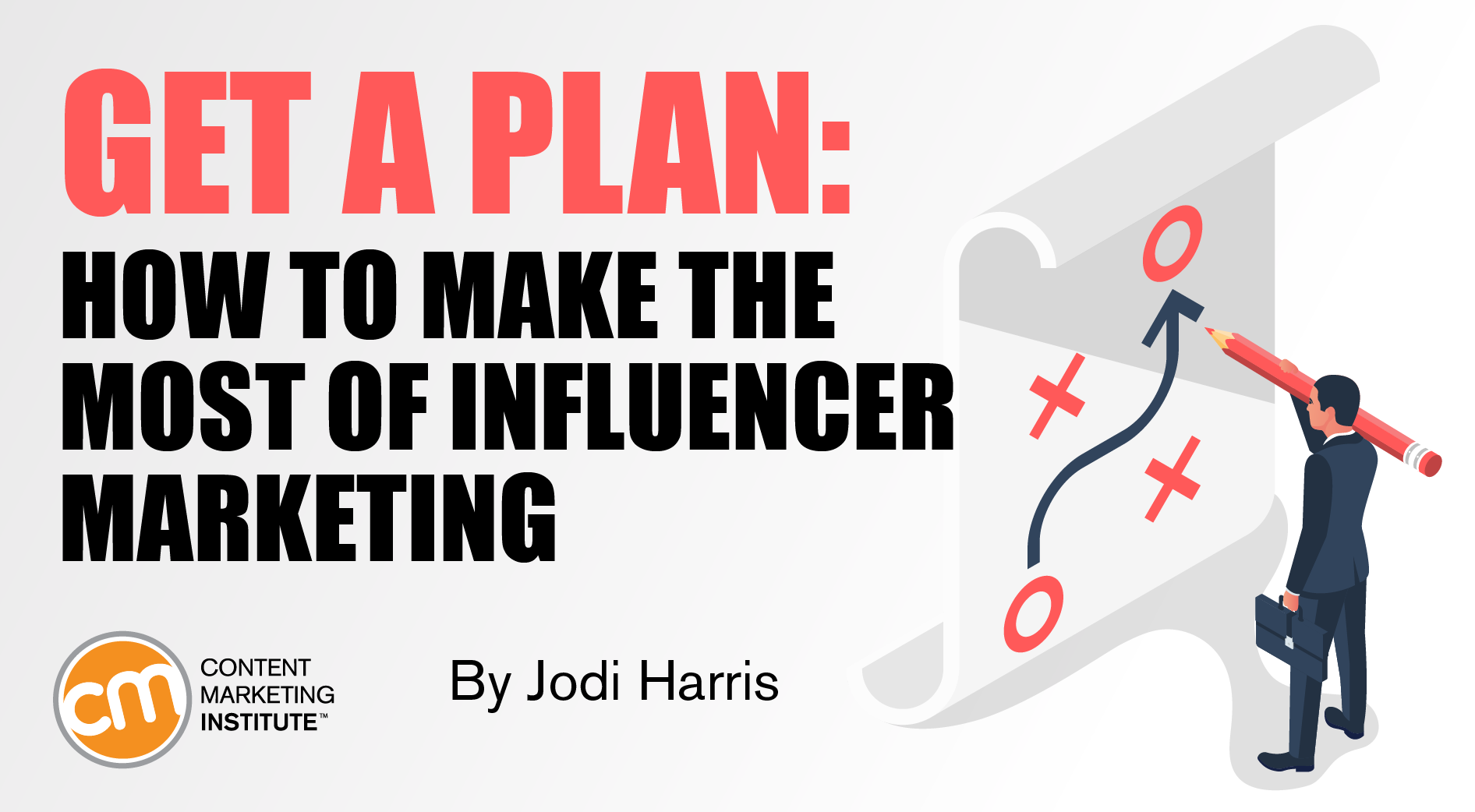Before online influencer marketing became a major “thing” (and way before it was legitimized as a structured technique or a lucrative career path), it was known as word-of-mouth marketing.
As a kid, I learned about the concept by way of a popular commercial for Faberge Organics, in which a smiling Heather Locklear shared her secret for bouncy hair with two friends, who in turn told two friends, and so on, and so on …
Though the underlying mechanisms of the “tell-a-friend” technique remain largely unchanged, social media has fueled its evolution into a strategic discipline infinitely more targeted, impactful, and scalable than anything Faberge’s marketing team could have predicted.
But successful influencer campaigns are tangled and tricky to manage these days. If you want today’s social tastemakers to amplify your content’s reach and influence, keep the following considerations and cautions in mind.
Speak your influencer truth to stakeholders
Whether or not compensation is involved, influencer marketing relies on securing the participation of independent promoters who are responsible for their interactions – for better or worse. That means you may have to do a little extra legwork to convince your content stakeholders to support a promotional technique not fully under your brand’s control.
Influencers are responsible for their interactions – for better or worse, says @joderama. Click To TweetHow can you make the case for adding influencers into your content mix? Here are a few facts you can cite as compelling evidence:
- Your marketing peers believe in it: In Influencer Marketing Hub’s 2019 study of marketing professionals who run influencer marketing campaigns, 92% believe the technique is an effective form of marketing, and 86% say they intend to dedicate budget to it this year.
- It builds trust: In Sharablee and Fullscreen’s 2019 Influence by the Numbers report, more than a third of participants (37%) claimed they’d be more likely to trust a brand after seeing an influencer promote it. Likewise, almost 40% said they’d be more likely to trust what an influencer says about a brand than what the brand says about itself.
- It attracts qualified leads and quality customers: According to a Tomoson poll, 51% of marketers believe they get better customers from influencer marketing. Further, the Influencer Marketing Hub study found that 82% of marketing professionals who use the technique believe that the quality of the customers driven by these campaigns is better than from other forms of their marketing.
- It can increase marketing ROI: According to a Burst Media study analyzed by eMarketer, brands saw an average ROI of $6.85 for every dollar invested in influencer marketing.
- It can drive sales: The Sharablee/Fullscreen report also found that 42% of consumers exposed to influencer content said they tried something an influencer recommended and 26% reported making a purchase.
Exercise caution to avoid common traps
In addition to talking up the significant benefits influencer marketing can provide, be prepared to discuss – and address – some of the technique’s rules and restrictions, as well as its most potentially damaging pitfalls.
Data privacy concerns
Many agencies and platforms that connect brands with potential influencers rely on audience data to determine whether an influencer’s following will engage with a certain brand. But privacy regulations – like the EU General Data Protection Regulation (GDPR) and the California Consumer Privacy Act – significantly restrict the collection of third-party data.

Disclosure requirements
As a recent article in CCO magazine mentioned, not only can big-name influencers command the attention of actively engaged audiences, they can also command a hefty payday – tens or even hundreds of thousands of dollars for a single product-friendly social media endorsement. With stakes this high, it shouldn’t be surprising that some brands have been less than transparent about the transactional nature of their influencer-based content efforts.
Regulatory agencies like the U.S. Federal Trade Commission frown on brands that fail to distinguish paid influencer ad spots from organic brand advocacy. If you want your influencer-generated content to uphold the highest standards of credibility – and place your brand firmly within your audience’s circle of trust – it’s worth getting to know the FTC’s guidelines for proper advertising disclosures.
Regulatory agencies frown on brands that fail to distinguish paid influencer ad spots, says @joderama. Click To TweetInfluencer fraud
The increasing prevalence of influencer fraud – including the use of fake influencers, as well as when paid tastemakers use artificially inflated follower numbers to increase their asking rate – has cast a shadow over marketers’ blue-sky views of the technique’s value. In fact, the Influencer Marketing Hub report found that 64% of respondents consider it a concern.
Industry thought leaders like Unilever’s now-retired marketing chief Keith Weed have been vocal in their call for greater oversight and accountability to keep fraud at bay. Ultimately, though, it’s up to the brands to pursue influencers with integrity and authenticity so they grow their audience of followers, not their marketing spends and legal fees.
Build your influencer infantry
Your brand’s ability to find success with this technique largely depends on the strength of the influencer relationships you develop and how you enlist their assistance in your content initiatives. With this in mind, here are a few pointers:
Find the right voices to amplify your best assets
A critical factor in any influencer marketing program is your team’s ability to identify the right people to work with and set the stage for a successful long-term collaboration. It also may be the most challenging part of the process as there are multiple tasks involved, including:
- Becoming familiar with the notable voices in your industry
- Vetting potential partners to identify those who share your brand values and perspectives, and resonate with your target audience
- Engaging top candidates and soliciting their participation
- Negotiating terms, fees, and deliverables
- Seeding, tracking, and managing their ongoing efforts
To start the discovery process, Aaron Agius suggests using keyword-based searches to surface notable names associated with your target topics. Type this query into a Google search field: [your industry] + “blog” (or “site”). Then, use advanced search operators to expand or narrow your results. Add the top resources to your list for further vetting. Bear in mind it may be tough to get the attention of the experts at the more popular sites because they’re likely to get a lot more inquiries than those from sites further down the list.
Use keyword-based searches to surface notable names associated w / your target topics. @IAmAaronAgius Click To TweetFilter your outreach based on mutual interests
Perri Robinson, head of marketing at Meltwater, recently pointed out that developing meaningful promotional partnerships takes more than an ask via email or direct message on social media. Top influencers worth their asking price get bombarded regularly with general requests to work with brands. To attract their attention, start a relevant, topical conversation that will interest your potential partner personally – not solely based on his or her status as a high-profile trendsetter.
No matter how good your #content is, what matters is how it’s distributed, says @Meltwater’s Perri Robinson. Click To TweetActivate your internal influencers
Working with influencers doesn’t have to mean paying pros to promote your products. CMI’s Vice President of Marketing Cathy McPhillips says there are likely plenty of established micro-influencers in your industry – including your employees – whose endorsement of your brand’s value can be more relevant and impactful than a room full of hired celebrities.
A diverse list of influencers is essential to ensure #content w/ various viewpoints, says @cmcphillips. Click To TweetFor example, Cisco leveraged influencer marketing by enabling its internal evangelists to share highlights of their work experience with Cisco’s Snapchat network. For its #WeAreCisco campaign, Cisco invited 20 super-ambassador employees from several office locations to an online brainstorming session about how to connect with university students, new graduates, and other members of Generation Z. That group (dubbed the Kitten Rainbow Unicorns to reflect everything that’s awesome about the web) developed a successful ongoing program in which the company’s young go-getters share daily Snapchat stories about what it’s like to work inside Cisco. Not only has the effort helped influence other talented workers to consider starting their career at Cisco, it’s also a great way to drive increased employee interest and participation in positive aspects of the company’s office culture.

Grow your influencer communities organically
Another point of entry into the micro-influencer realm is to purposefully build a community for your most vocal brand supporters. It’s an organic technique that Clare McDermott found to be working well at natural products company Tom’s of Maine.
.@TomsofMaine influencer community isn’t paid. They’re genuine fans who engage with the brand. @clare_mcd Click To TweetAccording to former community manager Bridget Burns, the company invites Tom’s superfans to join its community of people eager to participate in the brand’s content initiatives. “We share content and tell them that if they like it, they can share it with their followers. Because it’s not transactional (i.e., they are not paid), it feels very genuine,” Bridget said.
Equip and activate your content crusaders
Fuel influencer success with tactical assistance
We all have the best intentions, but time is short and sometimes projects that influencers agree to can suddenly become more of a burden than either party may have anticipated.
Fortunately, both SAP’s influencer marketing Vice President Amisha Gandhi and CMI’s Cathy McPhillips know a few tricks that can help external influencers meet their commitments and equip your internal content team to achieve the maximum benefit from those efforts:
- Detail the program’s goals and the role the influencer’s involvement will play, which helps them feel more vested in your collaborative efforts.
- Create a pre-event briefing that outlines key terms of engagement – such as relevant topics and keywords, target timelines, project deliverables and requirements to follow, or even starter ideas that influencers can put their spin on.
- Pre-write social media messages the influencers can pop into a post and publish.
- Craft eye-catching graphics, charts, screenshots, and other sharing-friendly JPG files that influencers might not have the ability to create.
- Develop trackable URLs/short codes for easier performance measurement (more on this later).
Go beyond the social content sphere
While most marketers might consider influencer marketing to be synonymous with the untamed nature of social media content, that doesn’t have to be the case. In fact, in his post on influencer marketing planning, Relevance co-founder Chad Pollitt recommends two blog-based content co-creation models that can give your brand more agency over your influencer initiatives.
- Influencer roundup post: In this technique, your content team collects and features the thoughts of industry influencers who have spoken on a relevant topic.
- Blog contributor program: You recruit industry influencers to write original content for exclusive publication on your blog. This approach can be fruitful for a brand because each influencer who contributes has an audience and a vested interest in the content being successful.
Chad also provides helpful, step-by-step templates to make it easier to manage each program’s editorial processes.
Spin unsolicited evangelism into influencer gold
Keep in mind that influencer marketing doesn’t have to involve prearranged or contracted engagement. You can amplify naturally occurring acts of brand advocacy with content that promotes your promoters (and, by extension, your business).
For example, if you regularly monitor your social media channels for relevant conversations (If you aren’t, perhaps it’s time you started. Like right now.), chances are you’ve noted a few influential voices that talk up your brand. Viral Content Buzz co-founder Ann Smarty suggests some ways to leverage their ideas and inquiries into valuable content assets:
- Incorporate web mentions into your content through regular roundups or a “featured in” section.
- Turn customer tweets into testimonials.
- Gather customer questions and critiques, then address their issues in your FAQ page on your website.
Evaluate and optimize influencer performance
Whether your influencer marketing program takes off immediately or takes time to build momentum, it’s important to continuously monitor and track its performance with the same diligence you would apply to any other step in the process. As industry trends, influencer popularity, and consumer behaviors shift, putting in the right analytics plan from the start enables you to identify potential trouble spots and course-correct before your efforts lose ground.
Rely on the right ROI calculations
As Jim Tobin points out, tracking influencer content performance based on direct attribution can be notoriously difficult because a linear customer journey doesn’t exist in this scattered and socially driven landscape. However, he suggests a few other sales-related metrics useful for gauging effectiveness:
- Promotion code redemption
- Direct web traffic
- Lift in online mentions
- Branded keyword search volume lift
- Correlated sales lift
- Conversion tracking
- Ad recall lift rate
Shane Barker recommends going deeper than standard sales KPIs to understand the value these content initiatives bring to your business. He’s established a fully detailed, five-step process to calculate the ROI of influencer marketing; but here are the topline details:
- Set your campaign goals – the more granular, the better.
- Define clearly your performance targets. For example, if your goal is to increase revenue, specify a dollar amount or growth percentage you want your influencers’ efforts to drive.
- Outline goals and metrics for each influencer. Depending on the terms of your engagement, you might expect different outcomes from some influencers compared to others.
- Choose a tracking platform to manage your efforts. Over the long term, working with an automation-enhanced solution will likely be more accurate and less time consuming than manually tracking performance.
- Measure and compare influencer performance. Document the results of each influencer’s efforts and compare them to the collective group of influencers. Over time, this information will help identify your most valuable influencer partners, enabling you to filter out the rest.
With mass influence comes massive responsibilities
Remember, putting your content’s fate into the hands of a high-profile promotional partner will require a leap of faith – and plenty of legwork on your part to discover the right formula for success. Got a tip for getting more value from your influencer initiatives? We’d love to hear about your experiences in the comments.
Gather with and learn from influencers in the content marketing industry at Content Marketing World this September. Sign up today using code BLOG100 to save $100.
Cover image by Joseph Kalinowski/Content Marketing Institute

